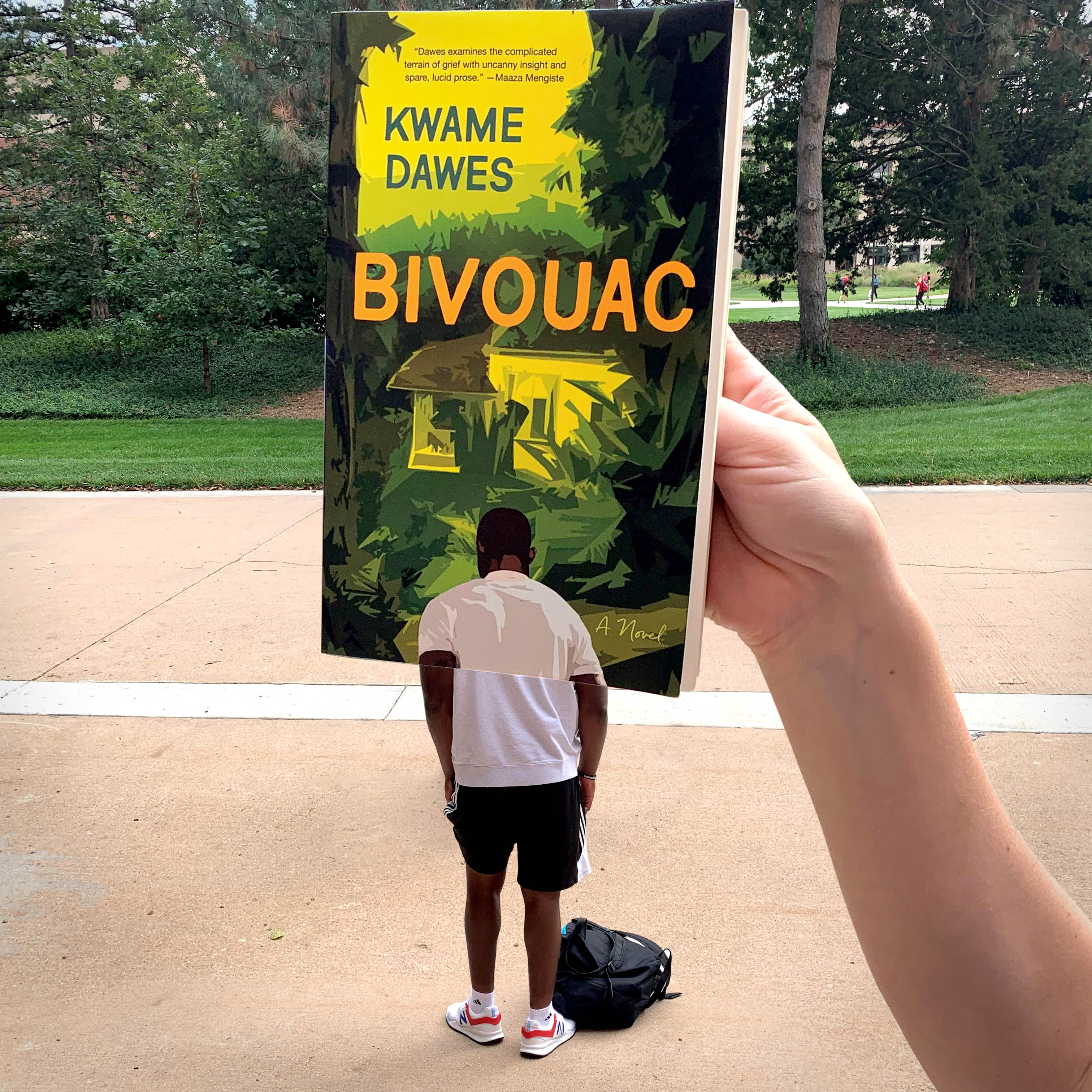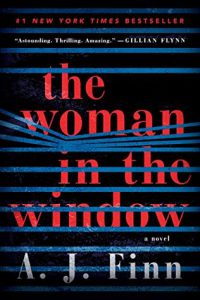Search the Blog
Categories
- Books & Reading
- Broadband Buzz
- Census
- Education & Training
- General
- Grants
- Information Resources
- Library Management
- Nebraska Center for the Book
- Nebraska Memories
- Now hiring @ your library
- Preservation
- Pretty Sweet Tech
- Programming
- Public Library Boards of Trustees
- Public Relations
- Talking Book & Braille Service (TBBS)
- Technology
- Uncategorized
- What's Up Doc / Govdocs
- Youth Services
Archives
Subscribe
Tag Archives: Friday Reads
Friday Reads: The Line Between by Tosca Lee
Cults, the impending apocalypse, and an ancient plague.
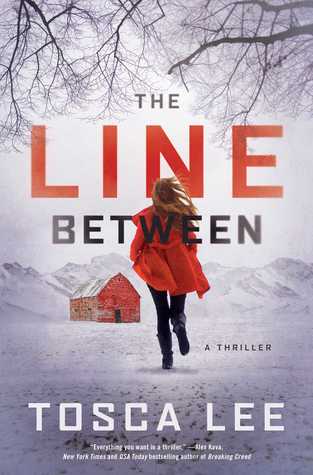
Wynter and her sister spent fifteen years within the walls of the New Earth doomsday cult compound under the charming leadership of Magnus, an ambassador to God himself. As Wynter’s sister, Jaclyn, seemed to thrive in this world, Wynter struggled.
After she’s cast out from her family and community, Wynter is forced into the outside world just in time for it to start ending. An ancient disease has been freed from the melting Alaskan permafrost and is sweeping across America causing victims to fall into madness (as well as general societal chaos and violence). Late one night, Jaclyn reappears with medical samples that might just hold the key. Now Wynter must find a way to get them to a research lab in Colorado before the world really does end as prophesied by Magnus.
The story alternates between past/present, through Wynter’s time living in the compound, to her banishment, as she connects with old family friends and tries to adjust to the outside world, then through the dangerous journey to save (and understand) the world with the help of former military, Chase Miller.
The sequel (A Single Light) comes out September 17th. (Don’t worry though, this first book doesn’t end with a big cliff-hanger.)
Don’t miss Tosca Lee tomorrow at the Book Festival!
Saturday, September 7th 1:00-2:30 p.m.
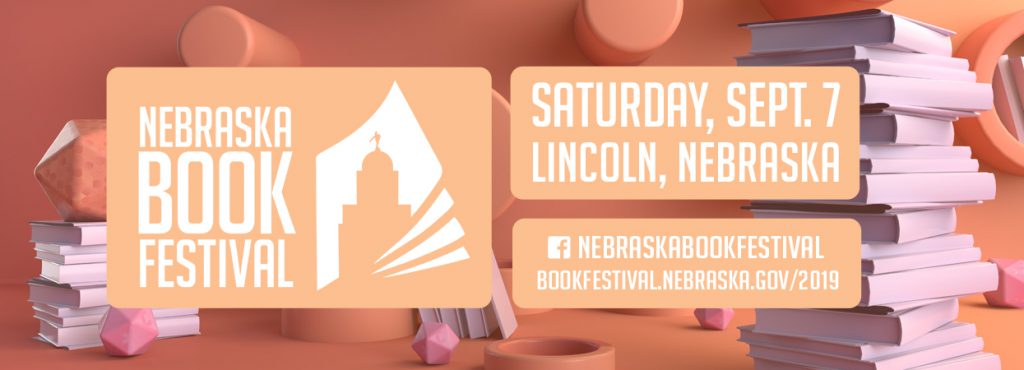
Friday Reads & BookFace Friday: Bivouac by Kwame Dawes
I’m reading Bivouac by Kwame Dawes, and I’m reminded that the 1980s were more than a station on your satellite radio. (And does your 80s station play Burning Spear as well as Musical Youth?) The novel is set in Jamaica, and politics are tumultuous throughout the region, and the activist father of our protagonist has died. It could be murder, but that murder might be medical malpractice, or it might have been as assassination.
Dawes uses a notable structural technique in telling the book from more than one viewpoint, and it feels modern as storytelling, extratextual—and the structural choices in form suggest to the reader that they consider the structural forms of the novel, and of family, and of political organization.
The formal structure only helps the reader become more intimate with the characters, and there is much to know. I’m thinking about the problem of guilt for a person who does not have good luck, but has still better luck than people close to them. I’m thinking about how a person can lose a progenitor but have that family live on as a symbol of something important to them—and how that can create tension between the love they feel for family, and the reality they have to continue to live in without that family present. You can’t resolve anything with someone who is gone, except by resolving with yourself. And everyone who is left behind has their own grief, and not all grief gets along.
Review by Lynda Clause, Nebraska Library Commission employee
Dawes, Kwame S. N. Bivouac: A Novel. , 2019. Print.
Meet the author at the upcoming Nebraska Book Festival September 7th in Lincoln.
Posted in Books & Reading
Tagged #FridayReads, Bivouac, bookface, bookfacefriday, Friday Reads, Kwame Dawes, Nebraska Author, Nebraska Book Festival
Leave a comment
Friday Reads: Heart Land by Kimberly Stuart
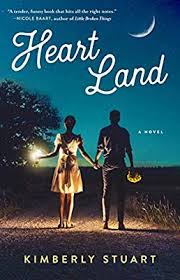 I read Heart Land to highlight this author’s visit to our upcoming Nebraska Book Festival September 7th in Lincoln. I could have easily shared this book with my mom as it fits into the genre of authors she liked including Jan Karon and Rosamunde Pilcher. This book follows the Hallmark movie recipe of an urban woman interrupting her hectic life to return to her rural hometown. Upon her arrival, she discovers love and a new appreciation for a slower pace of life.
I read Heart Land to highlight this author’s visit to our upcoming Nebraska Book Festival September 7th in Lincoln. I could have easily shared this book with my mom as it fits into the genre of authors she liked including Jan Karon and Rosamunde Pilcher. This book follows the Hallmark movie recipe of an urban woman interrupting her hectic life to return to her rural hometown. Upon her arrival, she discovers love and a new appreciation for a slower pace of life.
Such is the case with Grace Kleren, who graduated top of her class from the Fashion Institute of Technology with dreams of being a successful clothing designer. Having lost both of her parents in a car crash as a teen, she suffered a crisis of faith. Grace is fired from her job after pitching her clothing line to the boss, and unable to pay the bills, she returns to her Iowa hometown to live with her Grandma Gigi. On her first day job hunting, she almost runs over her high school boyfriend Tucker. Happily, there are no injuries but finding a way to earn a living requires some ingenuity.
Working with Gigi, the Church Sewing Club, and some vintage fabric, Grace finds a new and lucrative way to exhibit her design creativity. A few postings on Etsy prove that others also appreciate her design aesthetic. Soon she receives national attention in an online fashion magazine and an invitation to New York. As Grace navigates the conflicts between her head and her heart, her journey is about finding her own truth and what matters most. All of this happens with the encouragement of those who have always loved her in rural Iowa, where life is less exciting, but a good place to sort out Plan B.
Stuart, Kimberly. Heart Land. Howard Books (2018)
Posted in Books & Reading
Tagged #FridayReads, Friday Reads, Heart Land, Kimberly Stuart, Nebraska Book Festival
Leave a comment
Friday Reads: “After the Flood” by Kassandra Montag
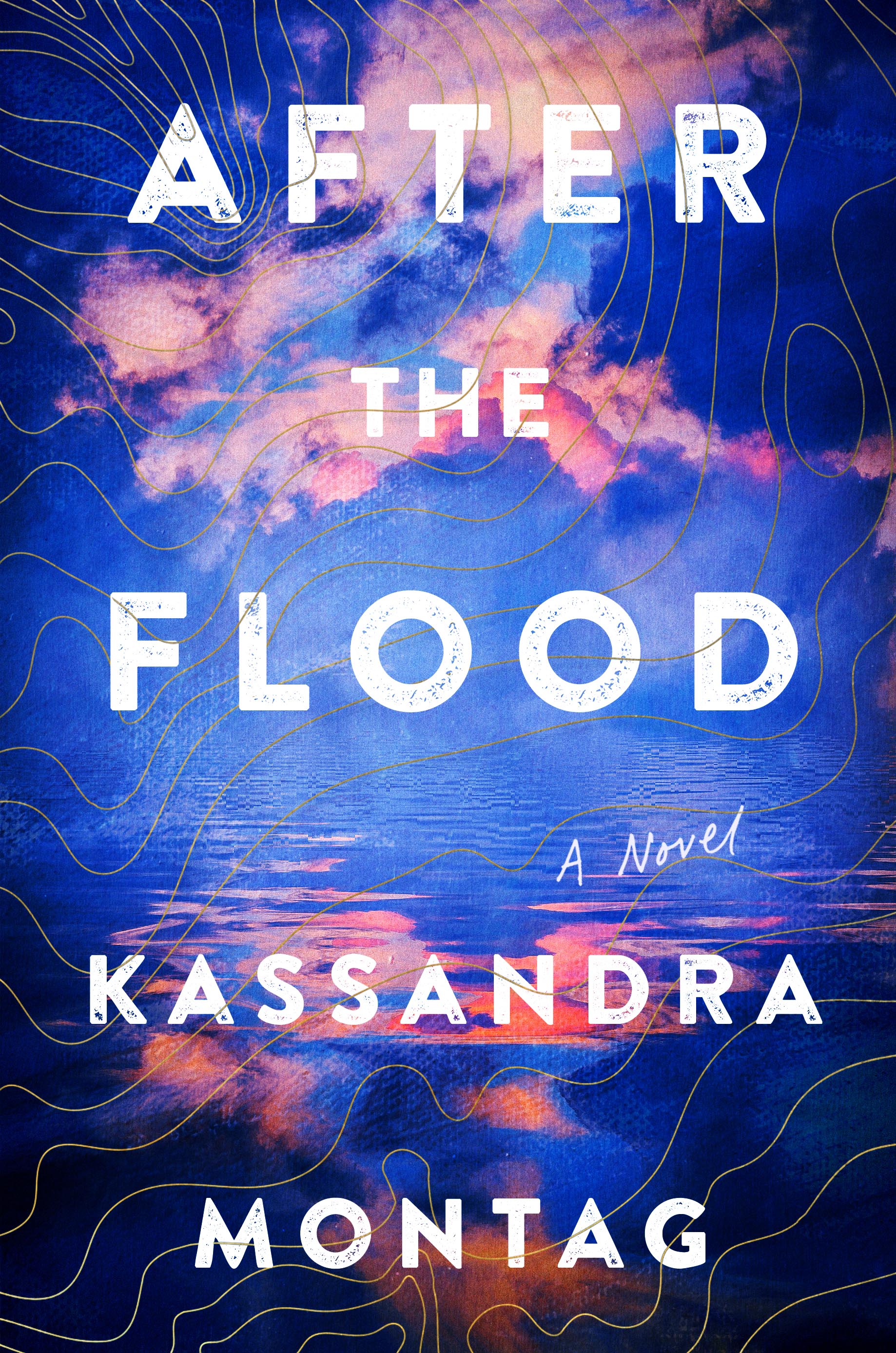 How far would you go to find your stolen child? What lies would you tell? What lines would you cross? I have been waiting at least a year to get my hands on this book, and when I finally did I couldn’t put it down. In her debut novel, Kassandra Montag has created a world that doesn’t seem as unlikely as you’d hope. Left in a Noah-esqu existence, characters are just trying to survive the destructive effects of climate change. Only the highest mountain tops dot the new landscape after massive flooding covers the earth. Myra, our heroine, and narrator is making her life on a small fishing boat after suffering devastating loss and betrayal. With only her six-year-old daughter by her side, Myra must make the choice of pursuing the trail of the daughter she lost or protecting the one she still has.
How far would you go to find your stolen child? What lies would you tell? What lines would you cross? I have been waiting at least a year to get my hands on this book, and when I finally did I couldn’t put it down. In her debut novel, Kassandra Montag has created a world that doesn’t seem as unlikely as you’d hope. Left in a Noah-esqu existence, characters are just trying to survive the destructive effects of climate change. Only the highest mountain tops dot the new landscape after massive flooding covers the earth. Myra, our heroine, and narrator is making her life on a small fishing boat after suffering devastating loss and betrayal. With only her six-year-old daughter by her side, Myra must make the choice of pursuing the trail of the daughter she lost or protecting the one she still has.
While the setting is a post-apocalyptic, the characters are completely authentic. No super-human strength, good looks, or smarts, just real people coping with their new reality. This book left me wanting more of everything, the story, the characters, and their relationships. I’m not so secretly hoping Montag has a sequel up her sleeve.
Come hear more about this great novel from the author herself on September, 7th at the Nebraska Book Festival. This Nebraska author will be answering questions and signing books, so don’t miss it!
Montag, Kassandra. After the Flood. William Morrow (2019)
Friday Reads: “This Blessed Earth” by Ted Genoways
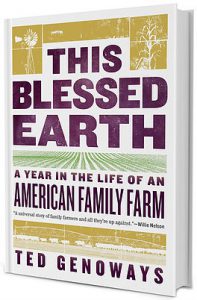 Ted Genoways spent a year following a Nebraska farm family – the Hammonds – and writes about his experiences and observations in his book, This Blessed Earth. Rick Hammond and his family raise soybeans, corn, and cattle on their fifth-generation farm near York. Genoways has said that the book intends a “kind of farm-level understanding of the systems that currently exist.” Genoways captures the challenges of farming and life experienced by this one farm family and, more generally, others.
Ted Genoways spent a year following a Nebraska farm family – the Hammonds – and writes about his experiences and observations in his book, This Blessed Earth. Rick Hammond and his family raise soybeans, corn, and cattle on their fifth-generation farm near York. Genoways has said that the book intends a “kind of farm-level understanding of the systems that currently exist.” Genoways captures the challenges of farming and life experienced by this one farm family and, more generally, others.
Genoways, a Nebraskan with long-standing family ties to farming, underscores the fact that farming is a huge gamble. In part, it is a matter of living with the uncertainty of weather, the unpredictability of global markets, federal farm policies, finances and more. These and many other challenges determine whether farming income exceeds expenses, falls below, or breaks even. A sudden storm, a downward turn in the markets, equipment breakdowns, and other unexpected events can change prospects dramatically.
Today’s farms are remarkably different from those of previous generations – farms covering thousands of acres, large and expensive tractors, and other equipment with computer screens, and GIS technology to determine spacing and measurement of soil moisture.
A bonus is the historical content and commentary that Genoways provides. Genoways writes about plant science, hybrid seeds, chemicals, water rights, irrigation, and much more. I grew up on a northeast Nebraska farm, decades ago. We raised soybeans among other crops. I had no idea that Henry Ford’s leadership, research, and initiatives were critical in the soybean becoming the dominant agricultural commodity that it is. Genoways details Ford’s recognition of the potential of the soybean for manufacturing and other byproducts. Genoways writes in-depth about Nebraska’s water resources, needs, vulnerability, policies, and management.
Beyond their hard work and self-reliance, farmers must have multiple skills – the ability to fix what is broken, the knowledge to grow and manage crops, the judgment to know when to plant and harvest, to raise and care for livestock, and the intellect to know when to buy and sell.
This Blessed Earth has received much-deserved recognition. It is the book selected by both Iowa and Nebraska for the two states’ 2019 statewide reading programs – All Iowa Reads and One Book One Nebraska. It is among the Smithsonian’s “Ten Best History Books of 2017” and it is the prizewinner of the Stubbendieck Great Plains Distinguished Book Award presented by the Center for Great Plains Studies.
Ted Genoways is a Nebraska book Award winner for both poetry (Bullroarer: A Sequence) and nonfiction (The Chain).
Genoways will speak at the Nebraska Book Festival on September 7.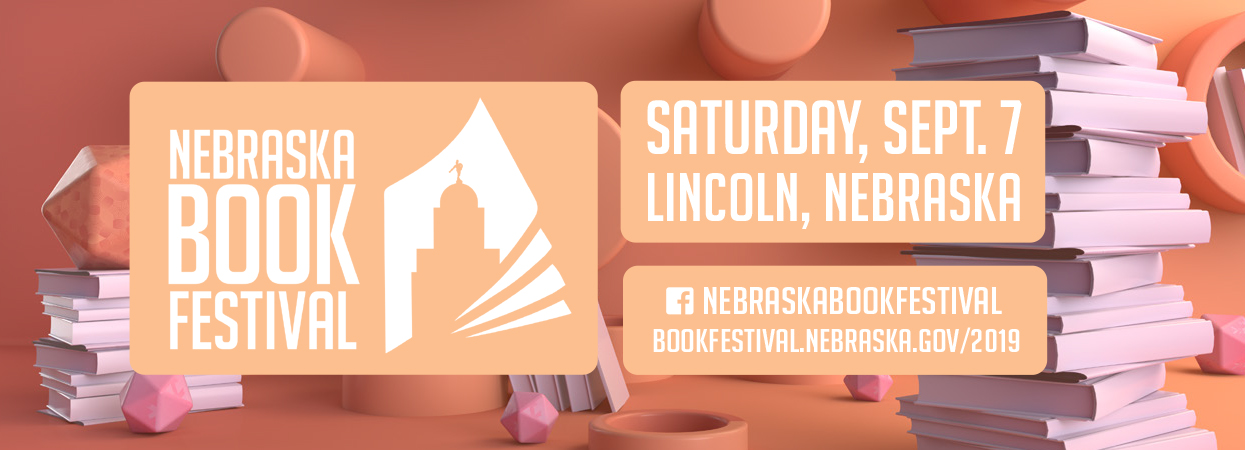
Genoways, Ted. This Blessed Earth. W.W. Norton, 2017.
Friday Reads: “Zoo Nebraska” by Carson Vaughan
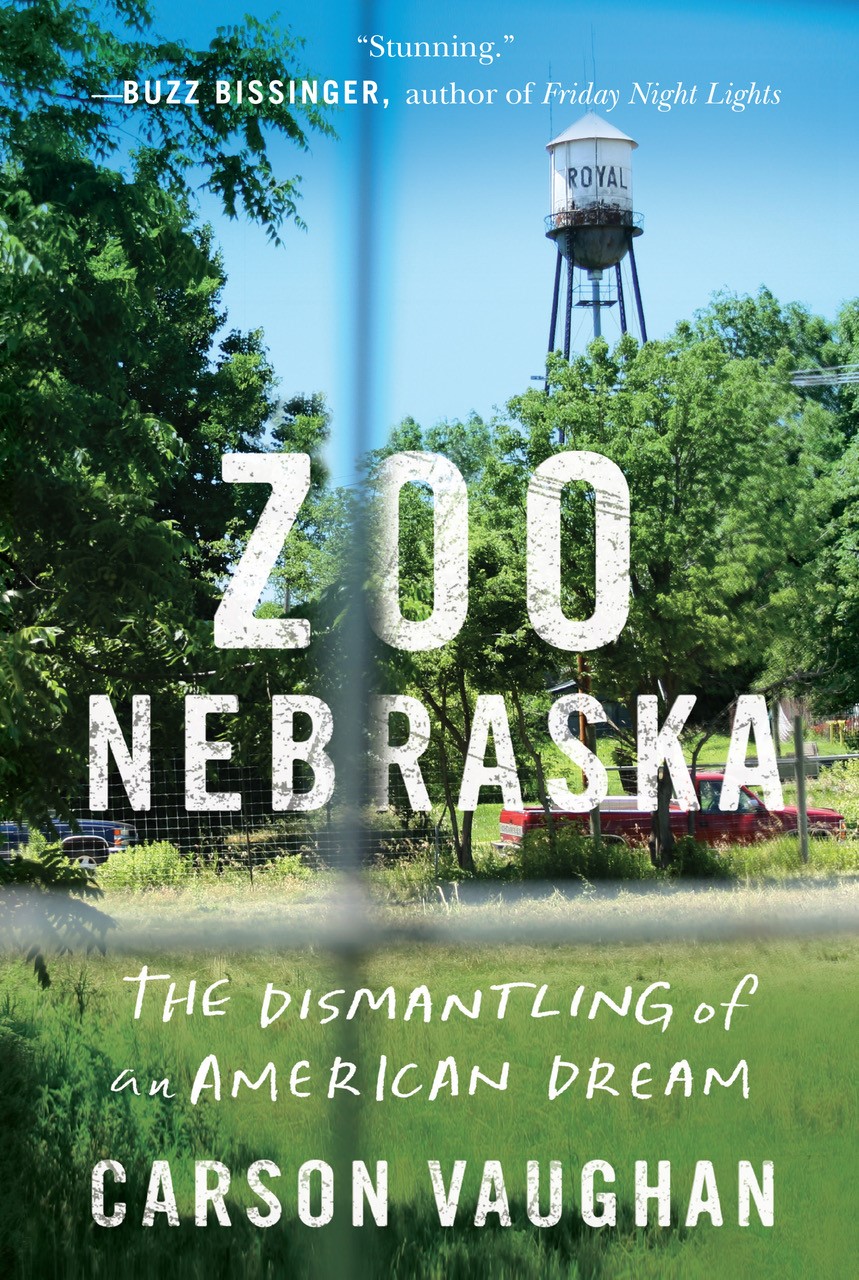 A few Nebraska natives still remember the little ragtag children’s zoo in Royal, Nebraska before its tragic end, but its existence has faded into the background of local knowledge like an empty, weathered barn. Easily overlooked. Carson Vaughan invites readers to slow down and take a closer look at what happened—or what could have, should have happened—in Zoo Nebraska: The Dismantling of an American Dream.
A few Nebraska natives still remember the little ragtag children’s zoo in Royal, Nebraska before its tragic end, but its existence has faded into the background of local knowledge like an empty, weathered barn. Easily overlooked. Carson Vaughan invites readers to slow down and take a closer look at what happened—or what could have, should have happened—in Zoo Nebraska: The Dismantling of an American Dream.
The murder of a mentor, a chimp named Reuben, a generous donation from Johnny Carson, and a white-knuckled hope to wring a scientific center out of an underfunded zoo drive founder and director Dick Haskin, but the dream alone can’t sustain him for long. Exhausted, Haskin turns directorship over to others, and we watch the actions of each new, well-meaning but misguided leader unravel into tragedy.
Vaughan calmly lays out the facts in vivid detail. Reading these pages I could feel the gravel crunch beneath my feet as he guided me through Royal, showing the empty buildings, the shadows of past residents. And I felt Vaughan’s shock as my own as he pointed, saying, “That’s where they shot Reuben.”
This week’s Friday Reads was guest written by Anna Weir, Publicist at the University of Nebraska Press! Vaughan will speak at the Nebraska Book Festival on September 7. Read Zoo Nebraska and bring your questions – I’m sure this candid narrator would be happy to answer.
Vaughan, Carson. Zoo Nebraska: The Dismantling of an American Dream. Little A (2019)
Friday Reads: Dog Man: Unleashed
 In keeping with the tradition of, er, I mean, my tradition of, lowbrow reading, this week’s installment is a little write up about Dog Man Unleashed. While the intended audience here is definitely grades 2+, uncultured readers of any age will enjoy the originality of this story. Dog Man Unleashed is the second installment in Dav Pilkey’s Dog Man series. The Dog Man series tells the post-accident stories of Dog Man (of course), a surgical union of a police officer and his sidekick police dog, Greg. An explosion resulted in injuries to both, so to save them, a surgeon sewed Greg’s dog head onto the human police officer’s body, resulting in (you guessed it), Dog Man.
In keeping with the tradition of, er, I mean, my tradition of, lowbrow reading, this week’s installment is a little write up about Dog Man Unleashed. While the intended audience here is definitely grades 2+, uncultured readers of any age will enjoy the originality of this story. Dog Man Unleashed is the second installment in Dav Pilkey’s Dog Man series. The Dog Man series tells the post-accident stories of Dog Man (of course), a surgical union of a police officer and his sidekick police dog, Greg. An explosion resulted in injuries to both, so to save them, a surgeon sewed Greg’s dog head onto the human police officer’s body, resulting in (you guessed it), Dog Man.
The writing appeals to younger reluctant readers and often isn’t grammatically correct (e.g. Super is “Supra”, and Laughs are “Laffs”), but who cares? You aren’t reading this for the highbrow storyline, you read it for the cartoonish illustrations and over the top tangents. And let’s face it, some educators need to lighten up a little bit and not worry about all these details. The antagonist Petey the cat (not to be confused with Pete the Cat), is the recurring up to no good villain who also appears in a couple of the Captain Underpants books, and has multiple schemes throughout the Dog Man Series. This installment (Dog Man Unleashed), while simplistic (Dog Man working to save the city from the evil, up to no good Petey), is effective in that it ultimately demonstrates kindness, empathy, friendship, teamwork, etc. However, the side stories, such as Dog Man tracking things with his smell, chasing cars, and hiding bones are equally entertaining. That and the simplistic illustrations will surely give the reader some welcome laffs.
One final note on those that express displeasure with the grammatical incorrectness of this book. Let me say that we often are caught up in rigidity at the expense of art and creativity. And (yep, I’m starting a sentence with And), that is evidence of one’s missing out on truly imaginative and unique things.
Pilkey, Dav. Dog Man Unleashed. Graphix (2016).
Friday Reads: “Pretend I’m Dead” and “Vacuum in the Dark” by Jen Beagin
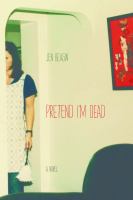 I read a review for Vacuum in the Dark and discovered that it was the sequel to Jen Beagin’s 2015 debut novel, Pretend I’m Dead. The latter tells the story of Mona, a 24-year-old cleaning woman in Lowell, Massachusetts, who just can’t seem to find her place in the world. Mona volunteers at a clean-needle exchange, collects vintage vacuum cleaners, and has an inner-dialogue with NPR’s Terry Gross (“This is Fresh Air!”). After a doomed relationship with a junkie, she moves to Taos, New Mexico.
I read a review for Vacuum in the Dark and discovered that it was the sequel to Jen Beagin’s 2015 debut novel, Pretend I’m Dead. The latter tells the story of Mona, a 24-year-old cleaning woman in Lowell, Massachusetts, who just can’t seem to find her place in the world. Mona volunteers at a clean-needle exchange, collects vintage vacuum cleaners, and has an inner-dialogue with NPR’s Terry Gross (“This is Fresh Air!”). After a doomed relationship with a junkie, she moves to Taos, New Mexico.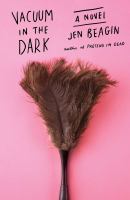
The rest of the novel, and the next book, follow Mona as she builds her house cleaning business in Taos (getting to know her clients in person and through their belongings; if you ever thought your cleaning person didn’t snoop, you’d be wrong). She makes poor decisions and weird friends, follows a man to Bakersfield, California, and confronts her past… and her future.
Each book can be read as a stand-alone, but I’d suggest reading them in order. Neither is terribly long – about 240 pages each. If you enjoy gallows humor, quirky characters, and discussions of cleaning products, Mona is the anti-heroine you’ve been waiting for.
Beagin, Jen. Pretend I’m Dead. Northwestern University Press, 2015.
Beagin, Jen. Vacuum in the Dark. Scribner, 2019.
Friday Reads: ‘Redshirts’ by John Scalzi
 I’m going to start off my review of Redshirts with a bold statement. If you are a fan of Star Trek – you need to read this book! And if you are a fan of Star Trek, the title should probably have been an obvious clue.
I’m going to start off my review of Redshirts with a bold statement. If you are a fan of Star Trek – you need to read this book! And if you are a fan of Star Trek, the title should probably have been an obvious clue.
For the uninitiated, ‘redshirt’ is the term that fans use to refer to the expendable crew members in the Star Trek universe. Whenever you see a landing party heading down to a planet, and a previously unknown character has been added to the team, you can almost guarantee that they are destined to die, in some horrific and/or ridiculous way. Typically these characters are security personnel, who wear red shirts as their uniform.
But, what if these particular crew members started noticing the trend, realizing that their friends and colleagues keep dying on away missions, more often than should be statistically possible. What would they do about it? Can they do anything about it? You’ll definitely be surprised by what they discover and how they try to save their own lives.
John Scalzi is a brilliant writer, and I think Redshirts is one of his best. It’s creative, funny, heart-wrenching, and thought provoking. I admit it, I literally laughed out loud many times while reading this book. If you like Star Trek, sci-fi parody, and yes, even time travel, I think you’ll really enjoy Redshirts.
And if you like audiobooks, this one is read by none other than Wil Wheaton. Yes, Wesley Crusher from Star Trek: The Next Generation. Perfect casting!
Friday Reads: What Elephants Know by Eric Dinerstein
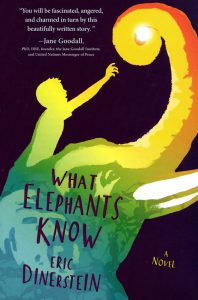 Set in the 1970s, Nandu (12) was found alone at about age 2, except for a pack of wild dogs protecting him, in the Nepalese Borderlands, having been abandoned by his parents. He was unofficially adopted by the Subba-sahib, the head of an elephant stable in the Borderlands, a very southern part of Nepal. The King of Nepal owns the stable and the elephants, but only rides once a year to hunt tigers in the area. Nandu is learning to handle elephants and become a mahout (an elephant trainer) – his charge is an older female elephant called Devi Kali, and she is protective of him.
Set in the 1970s, Nandu (12) was found alone at about age 2, except for a pack of wild dogs protecting him, in the Nepalese Borderlands, having been abandoned by his parents. He was unofficially adopted by the Subba-sahib, the head of an elephant stable in the Borderlands, a very southern part of Nepal. The King of Nepal owns the stable and the elephants, but only rides once a year to hunt tigers in the area. Nandu is learning to handle elephants and become a mahout (an elephant trainer) – his charge is an older female elephant called Devi Kali, and she is protective of him.
The beauty and danger of nature is explored and appreciated, as Nandu, Devi Kali, and other mahouts and elephants walk to the river for the elephants’ baths and sometimes must go into the jungle. Orphan rhino calves are rescued by the boys and tended by Rita, the sister of Nandu’s friend, Dilly. And sometimes the wild dogs provide unexpected assistance.
When Nandu is sent away to school, hopefully to learn things that will help the stable, he finds bullies and a couple of friends. One teacher accepts his invitation to visit the stable, and Father Autry’s wisdom is very helpful to Nandu and the Subba-sahib. The stable is threatened with closure, and at first the Subba-sahib takes no action, only waiting for the King’s reply to his request not to close. Things are beginning to look dire when Rita suggests they change their focus to becoming a breeding stable. It becomes Nandu’s job to travel to the elephant sale and buy a tusker worthy of their elephants, an event he has never attended and something he knows little about. Will he be successful and will that keep the stable alive?
Books that contain a great story and some actual facts about animals have always appealed to me. This title will appeal to middle grade readers (grades 4-7) who are likewise interested in animal stories. I have not yet read the companion novel (listed below), but I am going to have to find myself a copy.
Awards include winning the 2017 South Asia Book Award for Children’s and Young Adult Literature, and being named a 2017 ALA Notable Children’s Book.
What Elephants Know is followed by A Circle of Elephants: A Companion Novel, which was published in January of 2019.
Dinerstein, Eric. What Elephants Know. Disney-Hyperion, 2016.
Friday Reads: The Last Policeman
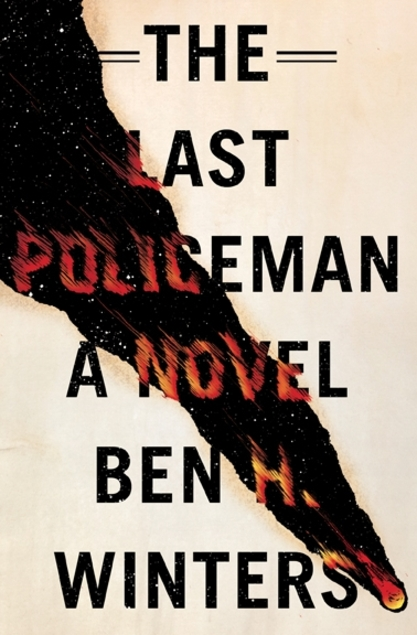 In six months’ time, an asteroid is going to slam into the Earth, ending all life as everyone knows it, and Detective Hank Palace just wants to do his job.
In six months’ time, an asteroid is going to slam into the Earth, ending all life as everyone knows it, and Detective Hank Palace just wants to do his job.
Peter Zell – actuary, ordinary, quiet man, fellow-waiter-for-the-End – is found dead in a McDonald’s bathroom. Suicide, of course. It must be, because all over Concord, and all over the world, people are killing themselves in a preemptive epidemic – it’s the end of the world, and things are beginning to get bad, and they’re only going to get worse before – BAM! – so why not get it out of the way sooner rather than later?
Only Hank – who wanted to be a detective since he was a kid, now, finally, has the chance; all around him people are walking off their jobs, because who wants to clock in when death, confirmed in odds and orbit is hurtling on a direct and unstoppable path towards your species’ sole habitable planet? And those people happen to include detectives, which means rookie cops get promoted years early, making Hank the luckiest, unluckiest man in Concord, depending on your perspective; hey kid, you made it, sorry about the asteroid. Ain’t the just the old sting of existential dread that comes with being a Millennial? – Only Hank isn’t so sure Peter Zell killed himself. Hank, still mostly bright-eyed, still dedicated, with Farley and Leonard’s Criminal Investigation’s textbook memorized, is pretty sure that Peter Zell was murdered.
The Last Policeman is not your everyday detective novel. The elements of a typical mystery are there: the suspects, the clues, the red herrings and the twists, the suspense that moves quick enough to have your spine straightening and your eyes brightening with quickened interest; did we get ‘em, did we figure it out? Remove the asteroid and you have a standard detective story: was a man murdered, and for what? Depending on who the man was, maybe there’s less dragging of feet. Put back the asteroid. Now a man is dead. Maybe murdered, maybe not; does it matter?
To Hank, it matters. He wants to know the story (175). He wants to do his job; a man is dead and that matters, even though they’re all going to die.
I love a good detective story, and if there’s a good, solid human element mixed with a literary style, then I am sold. Winters crafted a doomed world but kept Hank’s chin up enough despite, as one character calls it, “the weight of all this unbearable immanence” (39). It’s a complicated, bittersweet novel that surprised me by having bright moments of humor. Since it is the first in its trilogy, it left some threads dangling, and I am curious to see how Winters develops those plotlines. It is interesting to start a series where the end is pretty much a given – and not a particularly, one must assume, happy end. There was an element of denial I found myself falling into as I read. Because I – like Hank, like everyone – don’t want it to end like that.
Which creates a fascinating connection between the characters and the reader: to hope, in that ever-irrational, ever-human way, for an impossible way out; that somehow, someone failed to carry a one somewhere and threw the entire model off course; that at the last moment the asteroid is going to veer away and the disaster will be averted and we will all go on living.
The Last Policeman is followed by Countdown City and World of Trouble.
Winters, Ben H. The Last Policeman. Quirk Books, 2012.
Friday Reads: We Have Always Lived in the Castle
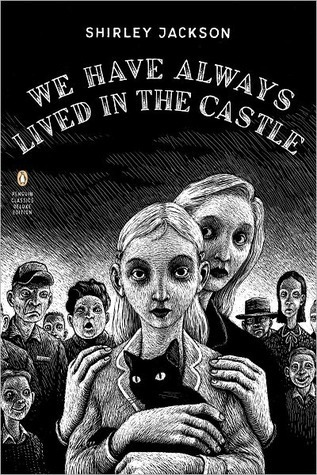 “Merricat, said Connie, would you like a cup of tea?
“Merricat, said Connie, would you like a cup of tea?
Oh no, said Merricat, you’ll poison me.
Merricat, said Connie, would you like to go to sleep?
Down in the boneyard ten feet deep!”
I recently finished Shirley Jackson’s 1962 work “We Have Always Lived in the Castle.” There’s definitely something lyrical in Jackson’s writing, that perfectly mirrors the narrator, Mary Katherine or “Merricat’s,” sing-song thought process. The children’s rhyme above is repeated throughout the novel underlining the story’s natural rhythm. Merricat lives an isolated existence with her older sister Constance and their invalid Uncle Julien. While Merricat is in her late teens, she still has a childlike existence, playing in the woods, burying treasure, her sole companion (outside her family) a cat named Jonas. Through her, we learn the backstory of a dark family tragedy, the death of her parents, brother, and aunt by poison six years earlier. The authorities charged Constance with murder and she’s acquitted of the crime but it leaves her agoraphobic, unwilling to leave the family’s large estate. The sisters are taunted and ostracized by the small local village, by the children and adults alike. And just as you are settling into this family’s strange routine, a long-lost family member shows up on their doorstep and turns their little world on its head.
I chose this book for a couple of reasons, first, I’m trying to get out of my comfort zone and read different genres and authors. I thought I’d dip my toe in horror with this book and move on to Jackson’s “The Haunting of Hill House” next if it all went well. My second reason is that the movie recently hit theatres and it’s always my goal to read the book first. This was my first Shirley Jackson book, and it will not be my last.
Jackson, Shirley. We Have Always Lived in the Castle. Penguin Classics, 2006.
Friday Reads: Sissy: A Coming-of-Gender Story by Jacob Tobia
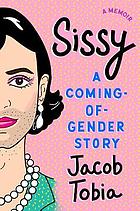 Sissy: A Coming of Gender Story is a comic memoir by Jacob Tobia. I recommend the audiobook, read by the author, whose voice is a like a comfortable but sparkly sweater. Tobia is a vegetarian, gender-nonconforming, Syrian-American from North Carolina who got into (but didn’t go to) Harvard, and who grew up loving Sunday School; and if you don’t already know that you have a lot in common with our author, you will realize it quickly.
Sissy: A Coming of Gender Story is a comic memoir by Jacob Tobia. I recommend the audiobook, read by the author, whose voice is a like a comfortable but sparkly sweater. Tobia is a vegetarian, gender-nonconforming, Syrian-American from North Carolina who got into (but didn’t go to) Harvard, and who grew up loving Sunday School; and if you don’t already know that you have a lot in common with our author, you will realize it quickly.
Tobia tells their story in an irreverent and authentic way, focusing on recognizing human needs, understanding human impulses, acknowledging human discomfort and pain, and just simply being a living and learning person. You might expect the book to be sad or “heavy,” and Tobia does not shy away from frank discussion and language about serious and emotional topics and events. But the book is funny, even while addressing all of that with respect (and did I mention frank language?). As Tobia told Salon in an interview about the book, “I don’t want to talk about what being trans means so much as I want to talk about how being trans feels.” Tobia is not trying to tell the one trans narrative that speaks for all trans people—they are telling one person’s story, their own, and we can all relate.
In the introduction, Tobia discusses gender identity in the context of physical and emotional health that’s especially illuminating. We all have a relationship with our bodies and our genders, relationships that are dynamic over our lifetimes. And we don’t stop growing and learning when we become adults. If anything, that’s when the truly informed growth and awareness can start. The book goes on to tell an engaging story that is far from being over.
Tobia, Jacob. Sissy : A Coming-of-Gender Story. Penguin Publishing Group, 2019.
Friday Reads: The Lost for Words Bookshop
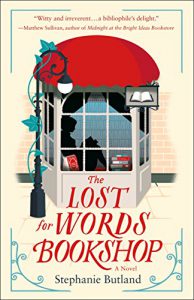 The Lost for Words Bookshop by Stephanie Butland opens with Loveday Cardew, rescuing a book from the gutter in York. England, not Nebraska. Just thought I would clarify so you can get the accent right in your mind. Anyway, the book she pulled from the gutter is sheer poetry, mixed with a bit of mud and grit. It also leads her to another poet, but that’s all I’ll say about that.
The Lost for Words Bookshop by Stephanie Butland opens with Loveday Cardew, rescuing a book from the gutter in York. England, not Nebraska. Just thought I would clarify so you can get the accent right in your mind. Anyway, the book she pulled from the gutter is sheer poetry, mixed with a bit of mud and grit. It also leads her to another poet, but that’s all I’ll say about that.
Despite her name, Loveday hates people with an awkward passion. It’s easier to control written people than real. When characters annoy you, just skip a few pages or shut the book in their face. It’s been known to happen.
But there is a bit of love mixed between the pages of The Lost for Words Bookshop. Not surprisingly, Loveday is the Byronic hero(ine) with the tortured past here. There is always a tortured past, isn’t there? But it’s not all angst. If it were, I wouldn’t be writing this review right now. I would have shut the book in her face. With enthusiasm!
Instead there is growth and a tentative hope for a better future. As often happens, this book about books is really about people. Loveday’s journey shifts between Crime, Poetry, and History. These are not my favorite sections of the bookstore, but this is also not your traditional crime novel. This particular crime had been solved years ago. Sort of. The mystery was how to deal with the fallout. You’ll have to read it to find out.
If you like books about the love of books, paired with a heroine who is discovering life, The Lost for Words Bookshop will help you find your way.
Friday Reads: Just One Damned Thing After Another: v.1, The Chronicles of St. Mary, by Jodi Taylor
Just One Damned Thing After Another: Chronicle of St. Mary’s, by Jodi Taylor shows how historians are trained to “investigate major historical events in contemporary time.”, but don’t call it time travel! Actually, I started this series with what I thought was the last book, Lies, Damned Lies, and History, v.7 and was so intrigued with the characters that I wanted to start the series from the beginning!
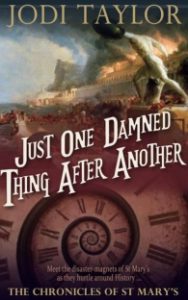
Just One Damned Thing After Another by Jodi Taylor
It begins with Max, (Madeline Maxwell), a disruptive, unhappy, student, being mentored in school by her head teacher. Next, a letter from the same head teacher, guides her from academe to the doors of St. Mary’s Institute of Historical Research, an adjunct of the University of Thirsk. Taking the tour of the facility with her mentor, she notices some oddities: little remarks about not having had an interview, she notices they have a security section, and a hanger named after Stephen Hawking. Finally she has “the interview” with the facility, which is when the real reveal of what they do at St. Mary’s occurs. Since she studied archeology and anthropology, with emphasis in Greek and Roman times, and has experience in archeological digs, she jumps at the chance to time travel. She signs up, and joins a small class of would be “historians”.
It is set in the UK in the fairly near future. The relationship with the University is of course fraught with politics and academic tensions. The borders of America (The United Sates) have been closed. And a great deal of funding is going toward Mars exploration, or a possible manned Mars trip. And, as a side note, all of this is run by some members of the same institution, but from a future form of the same institution. And the muse of history is the director’s PA (personal assistant).
While it isn’t perfect, the series is fun, raucous, accident prone, and in turns, deadly serious and on a dull weekend, or too cold, or too hot Nebraska day, the perfect antidote to very nearly everything. If you grew up on James Bond, Benny Hill, Saturday Night Live, Dr. Who, Monty Python’s Flying Circus, or simply like any or all of those shows, this is just the thing for you! Especially if you don’t mind it filled with really interesting parts of History, that feel well researched.
Chronicles of St. Mary, in order, as best as I can tell:
- Just One Damn Thing After Another
- A Symphony of Echos
- A Second Chance
- A Trail Through Time
- No Time Like the Past
- What Could Possibly Go Wrong?
- Lies, Damned Lies, and History
- And the Rest is History
- An Argumentation of Historian
Various Short Stories–Please muddle through them as you will!
Just One Damned Thing After Another: Chronicle of St. Mary, book 1, by Jodi Taylor, Nightshade, 9781597808682, 2013, paper back, $12.99
#BookFaceFriday “Stoner”
This week’s #BookFaceFriday is kind of a bummer, man…
Does this #BookFace look familiar? You might recognize this cover from Sam Shaw’s recent Friday Reads post about “Stoner” by John Williams (NYRB Classics, 2006). Sam, our Planning and Data Coordinator, was gracious enough to pose for this week’s photo.
“A beautiful, sad, utterly convincing account of an entire life…I’m amazed a novel this good escaped general attention for so long.” —Ian McEwan
Friday Reads is a weekly book review series posted by Nebraska Library Commission staff. Former NLC staffer Laura Johnson created this series to model the idea of talking about books and to help readers get to know our staff a little better. We hope that our book reviews will start a conversation about books among our readers and encourage others to share their own reviews and recommendations. Past Friday Reads are archived on the NCompass blog, or you can browse a list of reviews here.
Love this #BookFace & reading? Check out our past #BookFaceFriday photos on the Nebraska Library Commission’s Facebook page!
Posted in Books & Reading
Tagged #FridayReads, Book Face Friday, bookface, bookfacefriday, Friday Reads
Leave a comment
Friday Reads: The Woman in the Window, a novel by A.J. Finn
Shortly after I started back in April I was asked if I wanted to contribute to the commissions “Friday Reads” blog and of course I said “Yes!” And then I froze. I had been moving so I haven’t read anything in a while! Nothing I had with me seemed to work and nothing recently seemed intriguing. So after some (okay…a lot!) of browsing I finally came across “The Woman in the Window” by A.J. Finn. It mainly caught my eye as my cover says “Soon to be a major motion picture” and I’m the type of person who always has to read the book first. Rarely is a movie better than the book but with this one we’ll just have to wait and see.
Told from the perspective of one Dr. Anna Fox who, due to her battle with agoraphobia, has spent the last ten months in her house having what she can delivered so she never has to leave. She keeps tabs on her neighborhood through the lens of her camera and “see’s something she shouldn’t”. I’ve never seen “Rear Window”, or much of it at least, but it seems like there are a number of connections that can be made between this book and the movie. A person trapped in their home thinks they see something nefarious and people don’t believe them. The connection is made even stronger through Anna’s own love of old movies, including “Rear Window”, which are referenced throughout the book.
As for the rest of the characters A.J. does a good job fleshing each of them out but I hate to say it – he does nothing with them. Most of them have very little connection to the plot and you never really get to know any of them well. Unfortunately, you never really get to know Anna very well either as major parts of her story, and why she is the way she is, aren’t revealed until you’re ¾ of the way through the book. Thankfully the book redeems itself in other ways and really is a quick read. The “chapters”, some of which are only a page long, are grouped together by date and the flow that this gives the book never waivers. Plus, the way AJ writes really gives you an almost visceral feel for what’s going on (hence the reason I feel that if done right the movie might out shine the book.)
I wouldn’t recommend “Woman in the Window” to hard core mystery buffs, but other than that I found the book enjoyable. I normally don’t like mysteries as I find it frustrating that I usually figure it all out only sentences before the characters do. “The Woman in the Window” is more suspense story than a true “who-done-it” type of mystery, though, and it keeps you on your toes by throwing twists and turns at you constantly making you, and Anna, question if your reasoning is correct. With that being said in the end I was able to figure out the “who” well before it’s revealed in the book.
Friday Reads: The Book of Tomorrow, A Novel by Cecelia Ahern
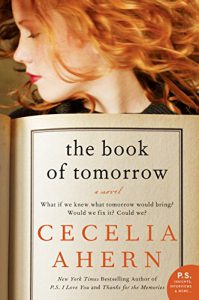 Once again, I have come across a book in the mystery sub-genre of Bibliomystery. In The Book of Tomorrow, Cecilia Ahern’s intriguing narrative proves to be much more captivating than just a whimsical young adult novel.
Once again, I have come across a book in the mystery sub-genre of Bibliomystery. In The Book of Tomorrow, Cecilia Ahern’s intriguing narrative proves to be much more captivating than just a whimsical young adult novel.
At first glance, Tamara Goodwin is nothing more than a poor little rich girl. But in one fell swoop, Tamara loses her father to suicide, her family’s lavish Dublin home to crippling debt and misfortune, her mother to a depression so debilitating that she can’t even get out of bed, and her friends. With dwindling options, Tamara and her mother pack their bags for Meath, a small town in the Irish countryside where Tamara’s distant aunt and uncle reside. Bored and restless, Tamara stumbles upon an old, padlocked diary one day while chatting with the cute boy that runs a lending library out of the back of a van. Shortly thereafter she discovers that the peculiar diary includes entries for one day in the future, seemingly authored in her own handwriting. Each day she finds herself startled by the accuracy of the prophetic diary, eventually learning to use its foresight to help her out of an unsettling situation in Meath, finding herself, and coming to terms with her father’s suicide and dark family secrets.
Cecelia Ahern is also the author of P.S. I Love You, so if you are a fan of that book, as well as a fan of Ahern in general, I’m sure you’ll also enjoy The Book of Tomorrow!
Posted in Books & Reading, General, Information Resources, Uncategorized
Tagged Friday Reads
Leave a comment
Friday Reads: I.M.: A Memoir by Isaac Mizrahi
 Audio biographies are always best when the author has the required talent to read his or her own material. Learning about the trials, tribulations, and triumphs of someone else’s life can give perspective to your own. Recently I listened to Isaac Mizrahi read his autobiography, I.M: A Memoir. As a gentile from the heartland, learning about a young Syrian Jew growing up in Brooklyn was a little like binge watching The Marvelous Mrs. Maisel, except from a gay male perspective.
Audio biographies are always best when the author has the required talent to read his or her own material. Learning about the trials, tribulations, and triumphs of someone else’s life can give perspective to your own. Recently I listened to Isaac Mizrahi read his autobiography, I.M: A Memoir. As a gentile from the heartland, learning about a young Syrian Jew growing up in Brooklyn was a little like binge watching The Marvelous Mrs. Maisel, except from a gay male perspective.
Isaac shares stories of his life with two older sisters and his fashion forward mother, Sarah. Fabric and clothing design were passions as a young boy as was constructing puppets with the sewing machine his father gave him. Isaac provided critiques on his sisters’ ensembles for the high holidays and paid close attention to how his mother shopped, accessorized, and was stylish on a budget. His father, Zeke, manufactured children’s clothing, selling coats and suits to stores like JCPenney and Sears. This was Isaac’s first exposure to the retail industry. Isaac’s relationship with his father was often difficult. At Yeshivah of Flatbush, an Orthodox Jewish school, the faculty told Isaac that God hated homosexuals and his father’s sentiments echoed this intolerance. The early death of Zeke demanded many religious obligations for Isaac to perform none of which he was able to complete with total conviction. This loss gave Isaac the opportunity to come out to his family, but remaining faithful to Judaism in the long term was untenable.
Isaac worked for Perry Ellis, Ralph Lauren, and others, leading him to begin designing his own clothing. He debuted his first signature line in 1987. Many of us remember Joan Rivers asking “who are you wearing?” to be answered with the name Isaac Mizrahi. The nature of life in a clothing design studio can be frenetic and unhinged, racing to meet deadlines and trying to satisfy high profile and often-difficult clients. The 1995 documentary Unzipped is an iconic representation of this period in fashion featuring many of the supermodels and personalities of the ‘90s. It highlights Isaac preparing for his 1994 fall collection after receiving critical reviews from his previous show.
Struggling with his own body image and insomnia were constant difficulties in his multi-faceted career, from hosting talk shows to cabaret singing. Ending his clothing line and transitioning to other projects, the speed of life settled into a more comfortable and healthy pace. Now Isaac is a spokesperson for his brand on QVC and is a judge on Project Runway All Stars. He continues to live in New York City with his husband Arnold and their two rescue dogs. Since his birth, the world has been Isaac’s stage. I only wish the stages were a little closer to the Midwest.
Mizrahi, Isaac. I.M.: A Memoir. New York: Flatiron Books, 2019
Friday Reads: The Size of the Truth, by Andrew Smith
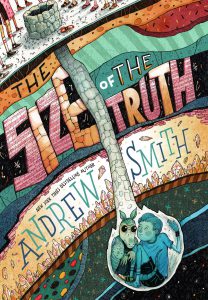 Andrew Smith is best known for writing young adult novels that range from darkly humorous and apocalyptic, like Grasshopper Jungle and Rabbit & Robot, to angst-filled and realistic, like Winger and Stand-off. In a notable departure, Smith just debuted his first middle grade book, the mostly realistic but tiny bit surreal The Size of the Truth. It’s a prequel of sorts, filling in the backstory of Sam Abernathy, Ryan Dean’s precocious, cooking-show-loving roommate from Stand-off.
Andrew Smith is best known for writing young adult novels that range from darkly humorous and apocalyptic, like Grasshopper Jungle and Rabbit & Robot, to angst-filled and realistic, like Winger and Stand-off. In a notable departure, Smith just debuted his first middle grade book, the mostly realistic but tiny bit surreal The Size of the Truth. It’s a prequel of sorts, filling in the backstory of Sam Abernathy, Ryan Dean’s precocious, cooking-show-loving roommate from Stand-off.
Sam narrates The Size of the Truth, jumping back and forth in time between the defining experience of his young life, which occurred when he was four and got trapped at the bottom of a well for three days, and his present, as an eleven-year-old eighth grader dealing with baggage left over from that event. The baggage includes severe claustrophobia and an inability to escape his identity, in Blue Creek, Texas, as “The Little Boy in the Well.” It also infects Sam’s relationship with his parents, who plot out every aspect of his life in an obsessive effort to “[make] sure [he’d] never have the freedom to fall into unseen holes in [his] future” (71). (Their version of his life involves Science Club, AP Physics, Blue Creek Magnet High School, and MIT, as opposed to the culinary school Sam aspires to attend.) Sam, for his part, goes along with this micromanagement because he doesn’t want to “do something as foolish as fall into a hole and disappoint [his] parents ever again” (71).
Sam’s challenge, in the course of this story, is to internalize the truth imparted to him by a probably-not-real talking armadillo named Bartleby (this is the surreal element referenced above), who he remembers visiting him during his time in the well: “don’t go living your life only trying to avoid holes” (172). Sam also needs to learn that other people aren’t always who he’s believed them to be either—most notably, James Jenkins, the older “murderous” boy Sam has always blamed for the well incident. (Everyone in Blue Creek assumes James is destined for football stardom when, unbeknownst to them, he has a whole other identity in Austin, Texas, where his mother lives.)
I don’t know how middle school me would have responded to Smith’s latest book, but it definitely strikes a chord with adult me. In particular, as the mother of a 17-year-old who I want to not only protect but also see flourish and succeed, it’s a good reminder of the damage we do when we project our expectations on to others, filling in their blanks without really listening to their truth.
Smith, Andrew. The Size of the Truth. New York: Simon & Schuster Books for Young Readers, 2019.
